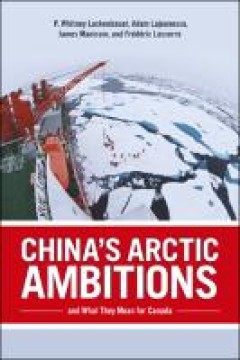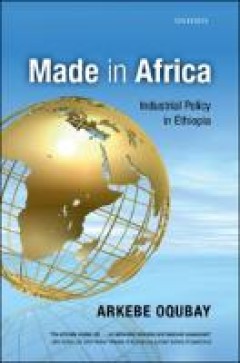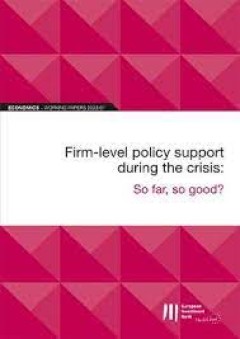Filter by

Wheat Improvement Food Security in a Changing Climate
This open-access textbook provides a comprehensive, up-to-date guide for students and practitioners wishing to access in a single volume the key disciplines and principles of wheat breeding. Wheat is a cornerstone of food security: it is the most widely grown of any crop and provides 20% of all human calories and protein. The authorship of this book includes world class researchers and breeders…
- Edition
- -
- ISBN/ISSN
- 9783030906733
- Collation
- -
- Series Title
- -
- Call Number
- -

Rereading Marx in the Age of Digital Capitalism
The 'end of history' has not taken place. Ideological and economic crisis and the status quo of neoliberal capitalism since 2008 demand a renewed engagement with Marx. But if we are to effectively resist capitalism we must truly understand Marx: Marxism today must theorise how communication technologies, media representation and digitalisation have come to define contemporary capitalism. There …
- Edition
- -
- ISBN/ISSN
- 9781786805188
- Collation
- -
- Series Title
- -
- Call Number
- -

China's Arctic Ambitions and What They Mean for Canada
China’s Arctic Ambitions and What They Mean for Canada is one of the first in-depth studies of China’s increasing interest in the Arctic. It offers a holistic approach to understanding Chinese motivations and the potential impacts of greater Chinese presence in the circumpolar region, exploring resource development, shipping, scientific research, governance, and security. Drawing on extensi…
- Edition
- -
- ISBN/ISSN
- 9781552389027
- Collation
- -
- Series Title
- -
- Call Number
- -

Made in Africa: Industrial Policy in Ethiopia
This book presents the findings of original field research into the design, practice, and varied outcomes of industrial policy in three sectors in Ethiopia, covering export-oriented and import-substitution industries. The three sectors are cement, leather and leather products, and floriculture. Given that there is a single industrial strategy, why do its outcomes vary across sectors? To what ex…
- Edition
- -
- ISBN/ISSN
- 9780198767800
- Collation
- -
- Series Title
- -
- Call Number
- -

Painting and Publishing as Cultural Industries
The Dutch Republic was a cultural powerhouse in the modern era, producing lasting masterpieces in painting and publishing-and in the process transforming those fields from modest trades to booming industries. This book asks the question of how such a small nation could become such a major player in those fields. Claartje Rasterhoff shows how industrial organisations played a role in shaping pat…
- Edition
- -
- ISBN/ISSN
- 9789089647023
- Collation
- -
- Series Title
- -
- Call Number
- -

EIB Working Paper 2022/01 Firm-level policy support during the crisi
During the COVID-19 crisis, the European corporate ecosystem avoided major disruptions, and corporate bankruptcy rates even declined. This outcome mostly resulted from the strength of support from monetary, financial supervisory and fiscal policies. Using the 2021 vintage of the EIB Investment Survey (EIBIS) matched with balance sheet data on firms' profits and losses, this paper investigates w…
- Edition
- -
- ISBN/ISSN
- 9789286152108
- Collation
- -
- Series Title
- -
- Call Number
- -

Robots and AI
Robots and artificial intelligence (AI) are powerful forces that will likely have large impacts on the size, direction, and composition of international trade flows. This book discusses how industrial robots, automation, and AI affect international growth, trade, productivity, employment, wages, and welfare. The book explains new approaches on how robots and artificial intelligence affect the w…
- Edition
- -
- ISBN/ISSN
- 9781000626483
- Collation
- -
- Series Title
- -
- Call Number
- -

Australia's Economy in its International Context: The Joseph Fisher Lectures …
This two-volume collection brings together the first 53 Joseph Fisher Lectures in economics and commerce, presented at the Adelaide University every other year since 1904. Funds for the Lectures, together with a medal for the top accounting student each year, were kindly provided by a £1,000 endowment to the University by the prominent Adelaide businessman Joseph Fisher in 1903. The Lectures a…
- Edition
- -
- ISBN/ISSN
- 9781922064431
- Collation
- -
- Series Title
- -
- Call Number
- -

Corporate Carbon and Climate Accounting
This volume is devoted to management accounting approaches for analyzing business benefits and costs of climate change. It discusses future directions on carbon accounting, performance measurement and reporting as well as links between climate accounting and business processes, product and service development, supply chain innovation, economic successes and stakeholder relations. Companies are …
- Edition
- -
- ISBN/ISSN
- 9783319277189
- Collation
- xii, 257 pages
- Series Title
- -
- Call Number
- -

Corporate Disclosures and Financial Risk Assessment A Dichotomous Data-Analyt…
This publication links information asymmetries and decision processes of financial investors through quantitative models. The aim is to analyze empirical observations and synthesize outputs in order to add new academic insights with practical pertinence. Multivariate scoring models and statistical analyses investigate situations on the market level that enables corporations to lower their capit…
- Edition
- -
- ISBN/ISSN
- 9783658124601
- Collation
- xi, 152 pages
- Series Title
- -
- Call Number
- 338.7
 Computer Science, Information & General Works
Computer Science, Information & General Works  Philosophy & Psychology
Philosophy & Psychology  Religion
Religion  Social Sciences
Social Sciences  Language
Language  Pure Science
Pure Science  Applied Sciences
Applied Sciences  Art & Recreation
Art & Recreation  Literature
Literature  History & Geography
History & Geography